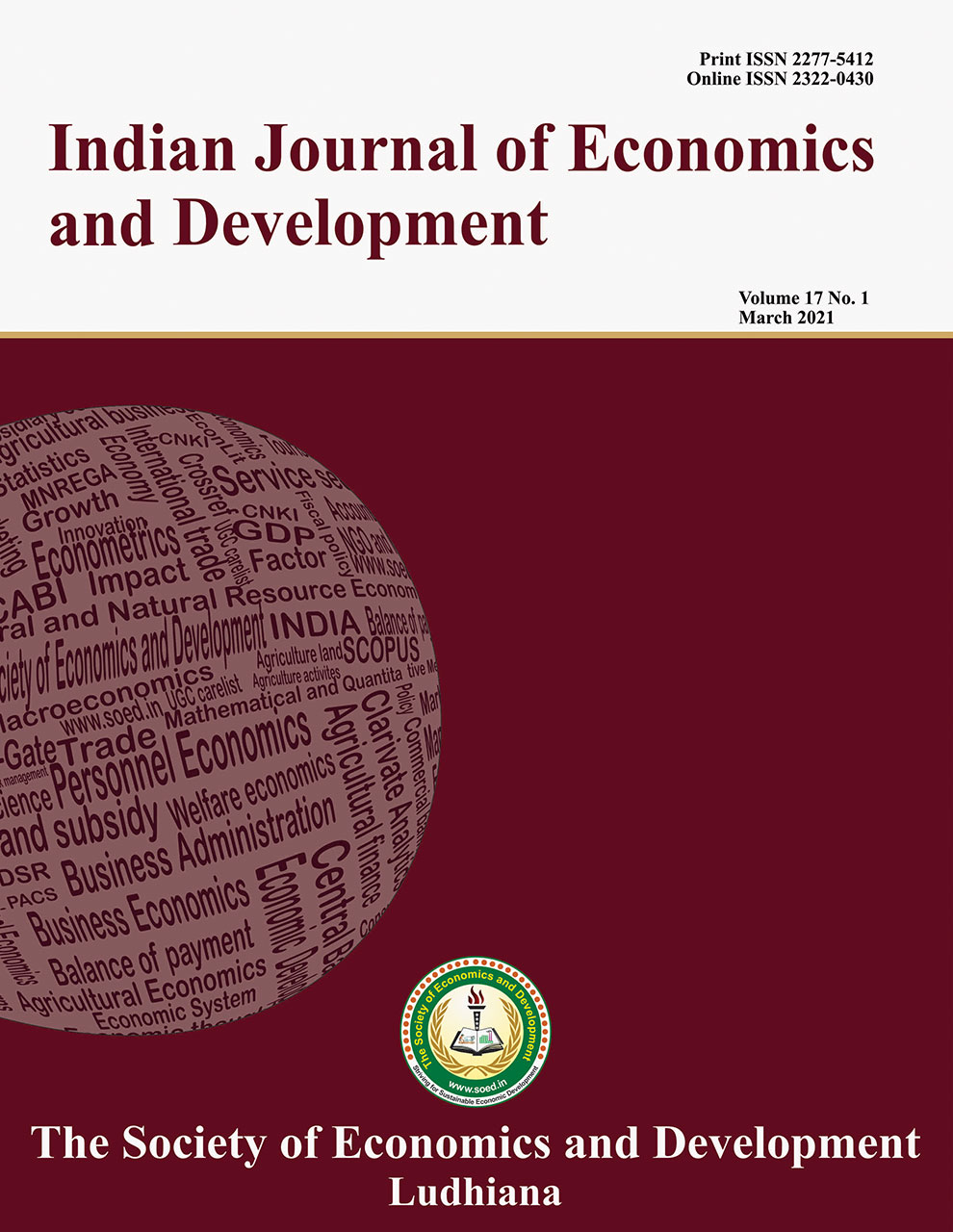Trend and Decomposition Analysis of Apple Production in India

Price: ₹ 500
Author: Shilpa1*, Ravinder Sharma2 and Ajit Sharma3
Author Address: College of Forestry and 3Department of Basic Sciences College of Forestry, Dr. Y.S. Parmar University of Horticulture and Forestry, Nauni, Solan-173230 (HP)
Keywords: Decomposition analysis, trends, variability.
JEL Codes: C13, C22, E23, O33.
Abstract
The present study was undertaken to examine the trend in area and production of apple in India. The study period was divided into two sub-growth-periods Period-I (1960-61 to 1990-91) and Period-II (1991-92 to 2015-16). The state-wise trend analysis during 2006-07 to 2015-16 revealed the highest growth rate in area (2.72 per cent per annum) and production (6.46 per cent per annum) was found in Jammu and Kashmir and Himachal Pradesh, respectively. The results revealed that the average area and production of apple has increased in Period-II as compared to Period-I, The growth rates of apple area were found to be positive in both the periods. The trends in apple production revealed significant positive growth in apple production was observed in both the periods. The relative variability in apple area has increased in Period-I as compared to Period-II. On the other hand, there was significant negative growth in productivity during Period-I (-0.28 per cent per annum). The decomposition analysis of apple production revealed that in Period-I increase in production was mainly due to area effect, whereas, in Period-II, it was due to yield effect. But in overall period area effect was found to be more pronounced. Therefore, steps should be taken to increase the productivity by using high yielding varieties to maintain the tempo of apple production in the country.
Description
Indian Journal of Economics and Development
Volume 15 No. 3, 2019, 470-474
DOI: 10.5958/2322-0430.2019.00060.X
Indexed in Clarivate Analytics (ESCI) of WoS
Shilpa1*, Ravinder Sharma2 and Ajit Sharma3
1&2Department of Social Sciences, College of Forestry and 3Department of Basic Sciences
College of Forestry, Dr. Y.S. Parmar University of Horticulture and Forestry, Nauni, Solan-173230 (HP)
*Corresponding author’s email: dhatwaliashilpi@gmail.com



